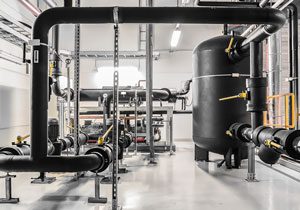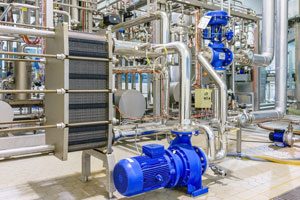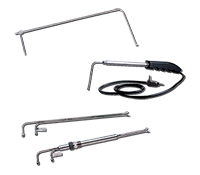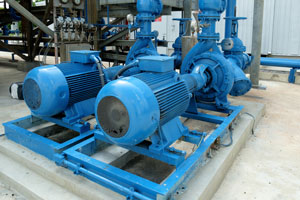 As discussed in previous articles and videos, pressure is the amount of force acting on a specific area and is equal to the force divided by the area. There are several types of sensing elements used inside pressure measurement devices. By understanding the components that make these products function and carefully comparing their specifications with your application requirements, you ensure the correct instrumentation is being used for your application. Today we’ll be discussing the functions of diaphragms and Bourdon tubes. Continue reading “Making Sense of Sensing Pressure”
As discussed in previous articles and videos, pressure is the amount of force acting on a specific area and is equal to the force divided by the area. There are several types of sensing elements used inside pressure measurement devices. By understanding the components that make these products function and carefully comparing their specifications with your application requirements, you ensure the correct instrumentation is being used for your application. Today we’ll be discussing the functions of diaphragms and Bourdon tubes. Continue reading “Making Sense of Sensing Pressure”
Hydraulic Fracturing for Oil Extraction
 In the past few years, oil production in the United States has skyrocketed. In fact, the U.S. is out-producing many OPEC countries and is currently on track to become one of the largest oil-producing countries in the world, alongside Russia and Saudi Arabia.[1] The top oil producing region in the U.S. is known as the Permian Basin, which includes parts of Texas and New Mexico. Other major oil-producing states include Colorado, Oklahoma, North Dakota, Alaska, and California.[2] Continue reading “Hydraulic Fracturing for Oil Extraction”
In the past few years, oil production in the United States has skyrocketed. In fact, the U.S. is out-producing many OPEC countries and is currently on track to become one of the largest oil-producing countries in the world, alongside Russia and Saudi Arabia.[1] The top oil producing region in the U.S. is known as the Permian Basin, which includes parts of Texas and New Mexico. Other major oil-producing states include Colorado, Oklahoma, North Dakota, Alaska, and California.[2] Continue reading “Hydraulic Fracturing for Oil Extraction”
Pressure Monitoring in Pump Systems
Why do the inlet and outlet pressure of pumps need to be monitored? What issues may be encountered if they are not monitored?
 Air compressors, irrigation systems, and heat exchangers all use pumps to push air or water through their systems. If the pressure in any of these systems is too high or too low, it could have serious consequences for the pump, the pipes, or the entire system. Most engineers choose pumps that operate 80-110% of their Best Efficiency Point (BEP), the point on the curve where the pump is most efficient. Pump performance will suffer if the pump is operating outside of the BEP, so it is important to monitor pressure to ensure you are getting the most out of your pumping system. Continue reading “Pressure Monitoring in Pump Systems”
Air compressors, irrigation systems, and heat exchangers all use pumps to push air or water through their systems. If the pressure in any of these systems is too high or too low, it could have serious consequences for the pump, the pipes, or the entire system. Most engineers choose pumps that operate 80-110% of their Best Efficiency Point (BEP), the point on the curve where the pump is most efficient. Pump performance will suffer if the pump is operating outside of the BEP, so it is important to monitor pressure to ensure you are getting the most out of your pumping system. Continue reading “Pressure Monitoring in Pump Systems”
Pressure Sensor Accuracy Explained
Air Velocity and Flow Measurement with Pitot Tubes

Dwyer offers many styles of Pitot tubes. Pitot tubes are commonly used sensors for monitoring air velocity and flow rate in heating, ventilation, and air conditioning. Some examples include the: Stainless Steel Pitot Tube Series 160, Telescoping Stainless Steel Pitot Tube Series 166T, and “S” Type Stainless Steel Pitot Tube Series 160S.

Pitot tubes are based on Bernoulli’s equation, which states that an increase in the speed of a fluid occurs simultaneously with an increase in dynamic pressure and a decrease in static pressure. Pitot tubes sense the dynamic pressure of the fluid flow at a particular point and were invented by French Engineer Henri Pitot in the early 18th century. Continue reading “Air Velocity and Flow Measurement with Pitot Tubes”





